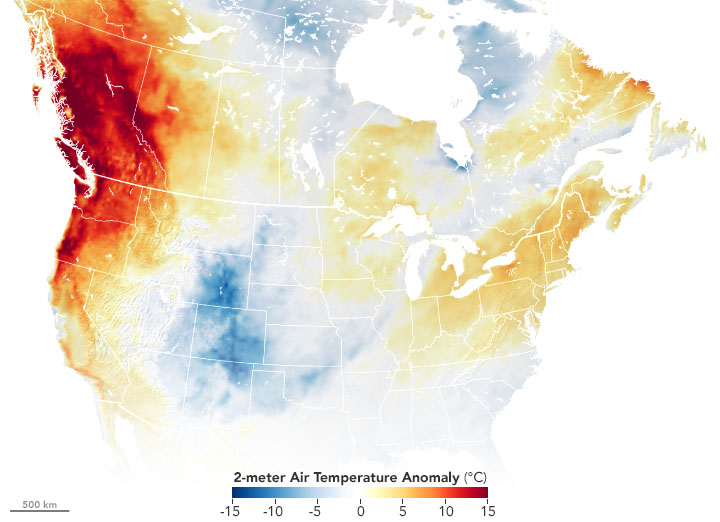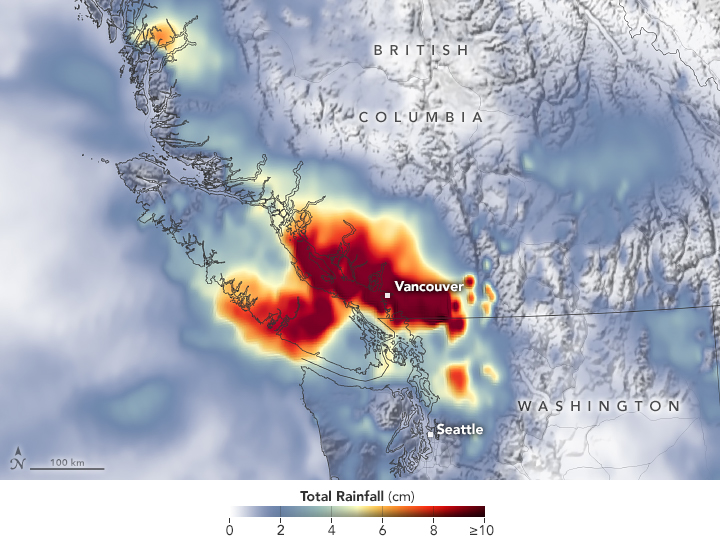Introduction to Natural Hazards and Climatic Variability
During the 2021 heat wave that covered Western North America between June 25th and July 7th, temperature records were broken in multiple cities by several degrees Celsius. The hottest temperature ever recorded in Canada, a scorching 49.6°C (121.3 °F) was measured in Lytton B.C. on June 29th (Figure 1). The following day wildfires spread and burnt 90% of the village down.

Lytton BC was not alone with these record-breaking temperatures, and much of B.C. recorded temperatures above 40°C Between June 25th and July 1st. This extreme heat directly caused the deaths of 719 people, making it the deadliest weather event in Canadian history. Analysis later showed that this was a 1-in-1000 year event related to climate change.
Four months later, between November 14th and December 17th 2021, southern British Columbia and northwestern Washington in the United States again experienced extreme weather. This time it was an atmospheric river which brought successive heavy rainfall systems to the area breaking rainfall records and resulting in numerous floods and mass wasting events.

These extreme weather events are examples of the natural hazards and resulting disasters that Canadians have recently experienced. Due to Canada’s vast size (the second largest country in the world), and enormous geographical and climatic diversity, it is unique. Bordered by three oceans, the Atlantic Ocean in the east, the Arctic Ocean in the north and the Pacific Ocean in the west, Canada has the world’s longest coastline (243,042 kilometres). Its landforms and features include mountain ranges, prairie plains, tectonic plate boundaries, the Great Lakes, river systems, permafrost and glaciers.
Climatically the country is dominated by sub-Arctic temperatures. However, where most of the population lives, the summers are hot and humid, and the winters are cold and snowy. This climatic diversity results in various weather patterns that can result in extreme weather events like droughts, heat waves, intense rainfall, hail storms, tornadoes, hurricanes and winter storms.
The combination of this geographical and climatic diversity means that Canada faces many natural hazards.
Learning Outcomes
After studying this chapter, you should be able to
- differentiate between a natural hazard and a disaster
- understand the concept of risk
- understand the concept of vulnerability
- understand the significance of exponential population growth and urbanization
- understand the relationship between frequency and magnitude

